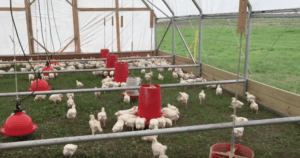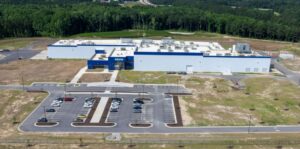Pasturebird, a poultry farming company using a novel way of raising chickens on pasture, has raised a seed extension funding round from angel investors. The new capital will enable the Murrieta, California rotational grazing operation to expand to 100 acres.
Paul Greive, co-founder and CEO of the business, believes this expansion will make it the largest pastured poultry operation in the US.
The business started when Greive and his brother started eating a healthy, paleo diet. As they were researching the source of the meat they were buying, they were shocked by the lack of clarity about what certain terms meant when it came to raising livestock, such as antibiotic-free.
“Cage-free, free-range, and antibiotic-free all have caveats that consumers are unaware of, so we decided to try raising our own chickens in our backyard, so we knew exactly what was in our meat,” he told AgFunderNews.
In 2012, they started with 50 chickens, which were quickly pre-sold to friends and family in the area. The next time they bought 100, and it grew exponentially from there.
“We kept growing like crazy; I was working at an accountant, and my brother was a teacher, but soon we realized we could quit and do this full time,” he said. “We never had any plans to do this, but the stars were clearly aligned.”
The pair developed a wholesale business in 2015. That same year the business got a boost with the AFB People’s Choice Award for Entrepreneurs of the Year in Spring 2015. And in 2016 it raised 50k birds. Greive expects to reach 300k birds in 2017, which would make it the largest pastured poultry operation in the US.
“We believe the largest pastured poultry operation is around 250k birds per year, but we don’t know that for sure,” said Greive. “We believe that the largest pastured poultry company that’s moving chickens every day (our model) is under 200k.”
Pasturebird differentiates itself from traditional pastured poultry operations by moving its chicken coops every day of the year. This rotates the chickens onto new pasture each day. This pasture will not be grazed for another 90 days, allowing it to regenerate.
Traditional pasture operations keep the chickens in the same location outside, which can lead to a build up in manure and degrades the pasture. This often leads to disease requiring antibiotics and vaccines, argues Grieve.
“Regenerated soils get healthier and healthier, retain more water, and mean we never need to use a single vaccine or antibiotic,” he said.
Rotational grazing is a technique used by livestock farmers keen to engage in regenerative agriculture. In poultry, the environmentalist farmer Joel Salatin has led the charge, and Pasturebird uses a similar technique to him, but the design and size of its chicken coops are different.
Pasturebird’s coops are larger and look a bit like a greenhouse. They are 36 feet long and 20 feet wide, giving chickens about 1.5 square meters at each plot. The sides are usually completely rolled up bar the odd rainstorm. The chickens peck and scratch at the grass, eating worms, which improves their health.

The birds get about 20% to 40% of their diet from the pasture so have supplemental feed.
The company rears two different types of chicken: a white chicken for wholesale and chefs and a red chicken that’s more like a heritage breed, which is raised organic for organic, individual sales.
“We chose a very slow growing breed for organic because we sell that direct to consumer and the customer is generally well-educated about cooking at home; they’re crockpotting it and really getting the most out of it,” said Greive. “We would have liked to keep doing that for wholesale, but chefs don’t really want that chicken. It’s tasty and flavorful, but it’s a little tougher than normal white chickens. It also fits the wholesale price point better and has a more familiar tenderness to customers.”
While Pasturebird has plans to expand to other parts of the country at some point, the climate of Southern California is perfect for raising pastured chickens. But with another 1k acres available on the current property, there’s no rush, said Greive.
“As long as we have the demand and labor, we could increase our operation 10 times,” he said. “We actually have an endless labor pool of highly skilled agricultural workers who are used to working on seasonal crops. We can afford to pay them more as they’re specialists and because we’re year-round, we have a competitive advantage.”




